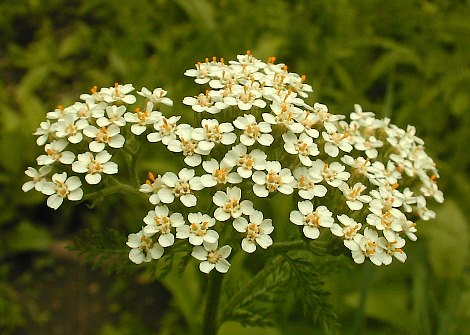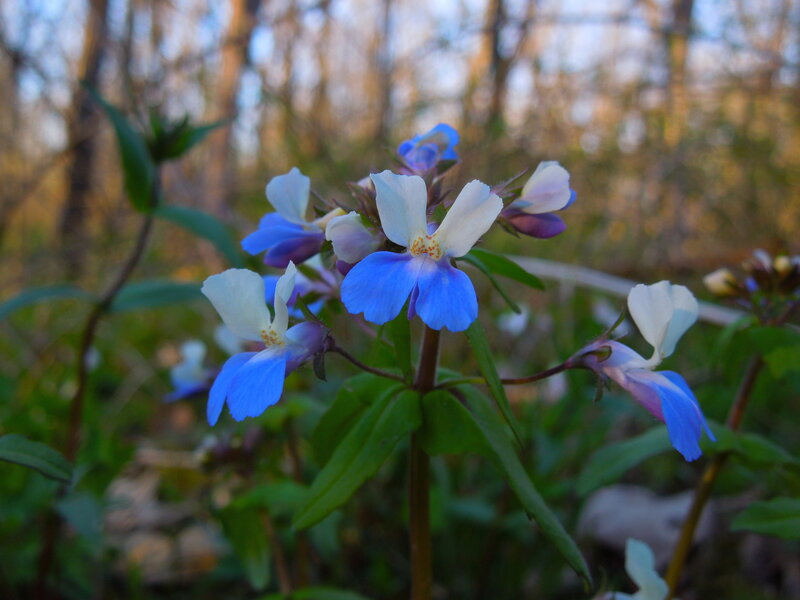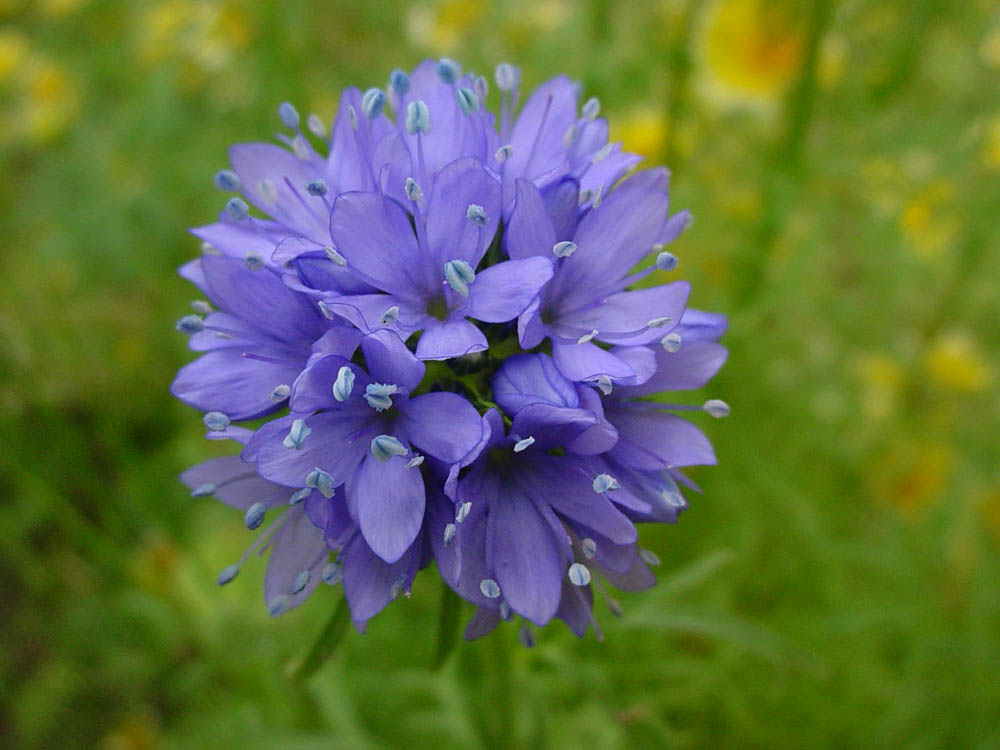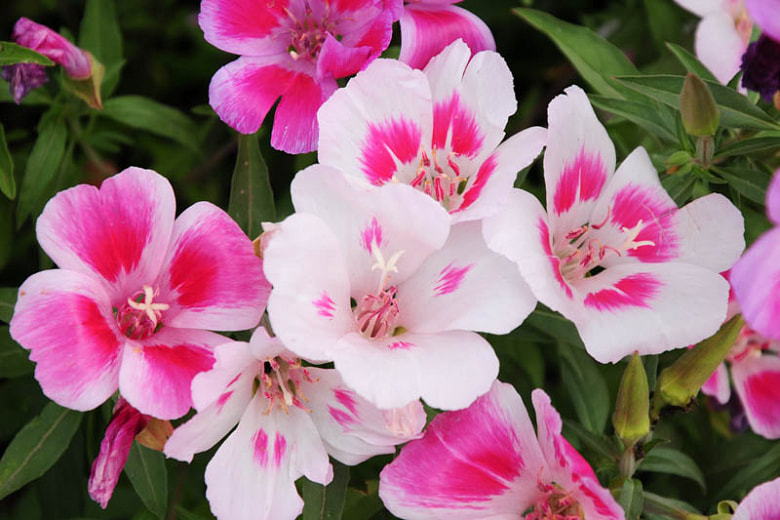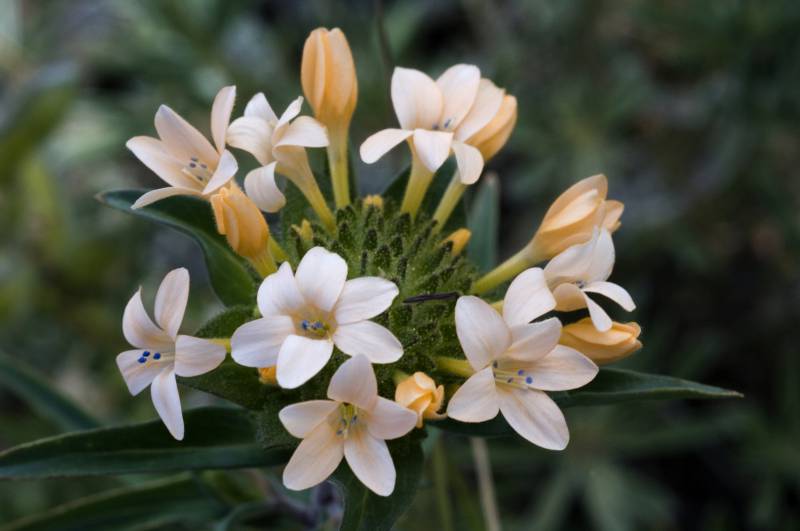Native Meadow Mix • Annuals
The Annual seed packet is a mix of six wildflowers native to the Pacific North West. Wildflower seeds included are Blue Eyed Mary, Farewell to Spring, Common Yarrow, Globe Gilia, Sea Blush, and Mountain Trumpet.
Annual wildflowers are easy to grow and rewarding, particularly to those new to growing wildflowers from seed.
Sowing/Planting: The mix should be direct sowed in the fall, ideally after or just before the first good/saturating rains of the season (about mid-September, no later than late October). The seeds will lay dormant through the winter and begin to germinate in spring with the earliest blooms appearing in May and latest blooms fading in September. How and where seed mixes should be sown depends on gardening style, plant identification skills, and environmental conditions.
For those new to growing native plants from seed, and because sowing will occur several months before germination, we recommend seedbed preparations and clear marking of the planting area. To prepare a clean seed bed: prepare desired planting area, water well, wait 1-2 weeks for weeds/undesirable seed to germinate, cultivate weeds/soil, repeat at least once.
Direct sow the seed mix into these prepared beds and top with a very thin (1/4 inch) dusting of compost, or chick (not hen) grit and compost which can be bought at your local pet/feed store, hen grit is too coarse. We recommend sowing annuals and the perennial mixes together as the annuals will germinate quickly providing some winter coverage and stabilization for the soils, but recognize that this is not necessary as sowing apart will work just fine.
Alternately seed can be grown in 4-inch pots in fall (3-6 seeds per pot). Make sure seeds have good contact with the potting medium and cover lightly with a dusting of compost, or a thin layer of chick grit (as mentioned above). Water plants or allow access to rain and cool temperatures (under 40 degrees), while protecting seeds/seedlings from heavy downpours, temperatures under 25-degrees, squirrels, pets, and curious children. Sowing in pots allows the grower to work on seedling identification skills and worry less about the seedlings competing against winter weeds that are lurking in garden soil. Also recommended if unable to get a clean seed bed due to planting in old pastures, lawn, or weed patches. Seedlings can then be planted outside in February (no later than early March).
Plants could also be potted for longer term growth in containers that are at least 12-inches deep, with about 15 seeds per square foot of surface area.
Water Requirements: Annual wildflowers do not need watering to thrive in our area, only to help extend bloom time when necessary. A warm spring may bring annual species flowering period to an early close, so this is when watering deeply can help counteract that. Additionally, transplanted seedlings should be watered deeply in the summer, to reduce potential plant stress.
Please note watering after flower production can be detrimental to the plants, causing stress related issues such as mildew, root rot, or insect issues.
Wildlife: This wildflower mix should attract native pollinators, particularly solitary bees, other solitary insects, and hummingbirds.
Maintenance: Annuals could be cut down after seeding or left standing for habitat structure, and/or ease of remembering the location of their planting.
Additional Information: The biggest issue with establishment of these slow to grow seeds is unfamiliarity, leading people to accidental weeding. We recommend the Burke Herbarium and other native plant books to familiarize yourself with these plants.
There are lots of variables to plant success, patience is key. If you have additional questions or need help with plant seedling identification, please contact [email protected]
Annual wildflowers are easy to grow and rewarding, particularly to those new to growing wildflowers from seed.
Sowing/Planting: The mix should be direct sowed in the fall, ideally after or just before the first good/saturating rains of the season (about mid-September, no later than late October). The seeds will lay dormant through the winter and begin to germinate in spring with the earliest blooms appearing in May and latest blooms fading in September. How and where seed mixes should be sown depends on gardening style, plant identification skills, and environmental conditions.
For those new to growing native plants from seed, and because sowing will occur several months before germination, we recommend seedbed preparations and clear marking of the planting area. To prepare a clean seed bed: prepare desired planting area, water well, wait 1-2 weeks for weeds/undesirable seed to germinate, cultivate weeds/soil, repeat at least once.
Direct sow the seed mix into these prepared beds and top with a very thin (1/4 inch) dusting of compost, or chick (not hen) grit and compost which can be bought at your local pet/feed store, hen grit is too coarse. We recommend sowing annuals and the perennial mixes together as the annuals will germinate quickly providing some winter coverage and stabilization for the soils, but recognize that this is not necessary as sowing apart will work just fine.
Alternately seed can be grown in 4-inch pots in fall (3-6 seeds per pot). Make sure seeds have good contact with the potting medium and cover lightly with a dusting of compost, or a thin layer of chick grit (as mentioned above). Water plants or allow access to rain and cool temperatures (under 40 degrees), while protecting seeds/seedlings from heavy downpours, temperatures under 25-degrees, squirrels, pets, and curious children. Sowing in pots allows the grower to work on seedling identification skills and worry less about the seedlings competing against winter weeds that are lurking in garden soil. Also recommended if unable to get a clean seed bed due to planting in old pastures, lawn, or weed patches. Seedlings can then be planted outside in February (no later than early March).
Plants could also be potted for longer term growth in containers that are at least 12-inches deep, with about 15 seeds per square foot of surface area.
Water Requirements: Annual wildflowers do not need watering to thrive in our area, only to help extend bloom time when necessary. A warm spring may bring annual species flowering period to an early close, so this is when watering deeply can help counteract that. Additionally, transplanted seedlings should be watered deeply in the summer, to reduce potential plant stress.
Please note watering after flower production can be detrimental to the plants, causing stress related issues such as mildew, root rot, or insect issues.
Wildlife: This wildflower mix should attract native pollinators, particularly solitary bees, other solitary insects, and hummingbirds.
Maintenance: Annuals could be cut down after seeding or left standing for habitat structure, and/or ease of remembering the location of their planting.
Additional Information: The biggest issue with establishment of these slow to grow seeds is unfamiliarity, leading people to accidental weeding. We recommend the Burke Herbarium and other native plant books to familiarize yourself with these plants.
There are lots of variables to plant success, patience is key. If you have additional questions or need help with plant seedling identification, please contact [email protected]

